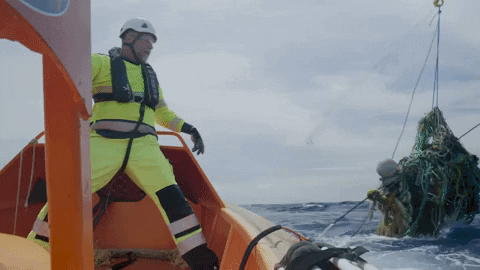Fortunately, we will not have to skim all of the world’s ocean surface (145 million km2) to remove plastic, but only the five ocean garbage patches, the largest one of which (the Great Pacific Garbage Patch) measures 1.6 million km2. This is because the plastic floating outside of these ocean garbage patches either naturally removes itself from the ocean by beaching onto a coastline, or eventually also ends up in an ocean garbage patch. The cleanup is focused on those accumulation zones, where the plastic does not go away by itself.
The gyres are still large areas where the plastic is dispersed, which makes cleaning up plastic by using conventional methods unfeasible. This is why we have developed a passive cleanup method. Because our cleanup systems “act like the plastic”, we see in our models that the cleanup systems do not travel a random path but pass through areas where the plastic concentration is higher than average.
The dimensions and specifications of the scale-up version of our cleanup system has yet to be confirmed. Assuming it would have a span of 800 meters and travels at 10 cm/s, the math shows that with a fleet of 60 systems, a surface area of about 150,000 square kilometers would pass through the systems every year – about 10% of the surface area of the patch.
Computer models indicate that this will result in a recovery of 50% of the Great Pacific Garbage Patch – every five years.
